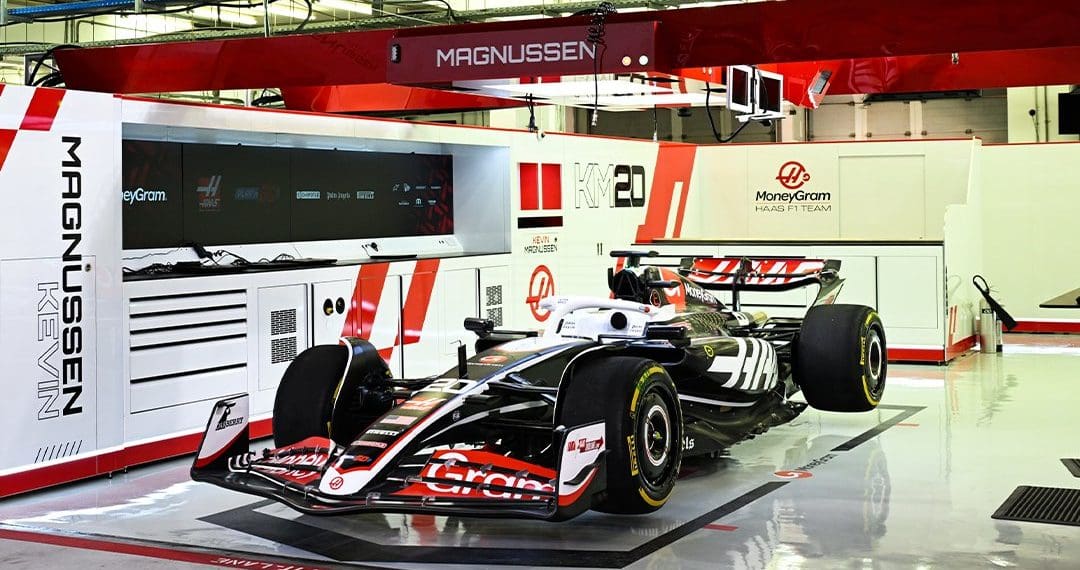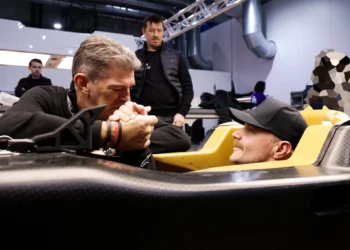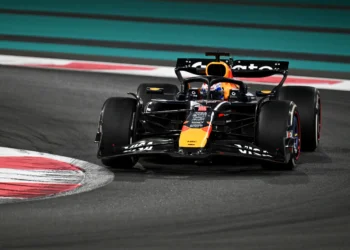Haas F1 has often been viewed as an underdog struggling to stay afloat, especially in recent years when the team battled through COVID setbacks and an era reliant on pay drivers. But in a surprising turn, the American team has begun its resurgence, and the secret weapon fueling its climb? A newly announced technical partnership with Toyota’s motorsport division, Toyota Gazoo Racing.
Komatsu’s Leadership and Gene Haas’ Strategic Investments
Gene Haas has always ensured the team’s survival, but his measured financial approach meant every investment had to yield a clear return in performance. This philosophy was evident when he replaced long-time team principal Guenther Steiner with Ayao Komatsu, signaling a shift in strategy. Under Komatsu’s leadership, Haas has seen a marked improvement in performance throughout 2024, suggesting that the team’s investment strategy is starting to pay off.
Komatsu’s influence is further extending beyond the racetrack. Projects like a new motorhome and the potential for a state-of-the-art factory have been greenlit, thanks to the on-track progress. But Haas needed something more—a fast-track solution to bridge the gap between them and their competitors. Enter Toyota.
Toyota: The Ultimate Shortcut for Haas’ Growth
The partnership with Toyota isn’t just about swapping resources; it’s a strategic alliance that could accelerate Haas’ growth trajectory significantly. Toyota brings world-class facilities, technical expertise, and decades of motorsport know-how that Haas simply couldn’t replicate on its own. This collaboration enables Haas to sidestep the slow, expensive process of building its own infrastructure from the ground up.
As Komatsu acknowledged, Haas remains the smallest team on the grid in terms of personnel, and expanding its capabilities takes time and resources. While the team isn’t short on funding, hiring the right people and developing the necessary equipment takes years. Aston Martin’s long timeline for its new factory—initiated in 2021 and still incomplete—serves as a cautionary tale. By teaming up with Toyota, Haas can sidestep this delay and leverage Toyota’s existing motorsport facilities and expertise to fast-track its development.
Toyota’s Technical Input: A Game Changer
Toyota’s involvement isn’t just symbolic. The Japanese giant will assist Haas with vehicle design, technical services, and manufacturing, allowing the team to focus more effectively on car development without the burden of building and maintaining new infrastructure. The alliance is particularly focused on high-quality component production and streamlined development processes—key elements that can significantly enhance Haas’ competitiveness.
It’s a win-win arrangement: Toyota benefits by immersing itself in the F1 environment, gaining insight into the latest technologies and strengthening its engineering talent. While it’s unlikely that Toyota will venture into power unit development just yet—Ferrari will continue supplying Haas engines until at least 2028—the partnership lays the groundwork for future possibilities.
Toyota’s Long Game: Eyes on the Future?
Toyota’s cautious stance on a full F1 return shouldn’t be underestimated. This partnership with Haas allows Toyota to expand its expertise while keeping its options open for a deeper involvement when the new 2026 regulations take effect. Gazoo Racing Company president Tomoya Takahashi hinted at “vehicle development” as a broad term, signaling that Toyota’s contributions could evolve.
Whether Toyota’s move is a long-term strategy to test the waters for a full comeback remains to be seen. However, the collaboration allows the automaker to train its personnel, refine its technologies, and potentially position itself for a larger role in F1’s future landscape.
Haas’ Path Forward: Aiming High with Toyota’s Boost
Haas is aiming to finish as high as sixth in the constructors’ championship this season, a commendable feat for one of the grid’s smallest teams. With Toyota’s support, they now have the muscle to tackle bigger projects and accelerate their development cycle ahead of the 2026 regulations. The partnership will provide immediate benefits as Haas gears up for the aerodynamic work allowed under the new regulations in just a couple of months.
The real test, however, will be Komatsu’s ability to integrate Toyota’s expertise without disrupting the momentum Haas has built this season. The seamless blending of the two organizations is crucial to ensuring that Haas not only stays competitive but also rises further up the grid. With Toyota’s backing, the American team might just have the tools it needs to leap from underdog to contender in the coming years.










